What Is Cellulite? Unlocking & Understanding the Common Skin Condition
Cellulite: the word alone conjures up feelings of frustration and confusion for many. Characterized by its unique, dimpled appearance, often likened to orange peel, cellulite is a common skin condition that affects up to 90% of women at some point in their lives, as well as a number of men. Despite its prevalence, cellulite remains one of the most misunderstood conditions, shrouded in myths and misconceptions.
This blog aims to demystify cellulite, shedding light on its causes, the various types, and the reality behind the common myths that surround it. By understanding what the condition truly is and what influences its development, we can approach it with a more informed and less critical perspective. Let’s dive into the complex world of cellulite, exploring the scientific explanations behind its formation, the factors that contribute to its appearance, and the truth behind the myths that have long perpetuated a misunderstanding of this ubiquitous condition.
Armed with a clearer understanding of its causes, the different types it presents, and the truths behind the widespread myths, we can approach cellulite with a more informed and compassionate perspective. It’s important to remember that cellulite is a natural and common condition, not a flaw or failure. While society often strives for perfection, the reality is that variations like cellulite are part of the human experience, affecting people of all ages, sizes, and genders.
Although various treatments and lifestyle changes can help manage its appearance, the most crucial step we can take is towards acceptance and self-love. By dispelling the myths and embracing a deeper understanding of cellulite, we empower ourselves and others to feel more comfortable in our skin, recognizing beauty in all its forms.
Remember, cellulite is just one small facet of who we are, and it doesn’t define our worth or beauty.
What is Cellulite and How Does it Form?
Cellulite is a term that describes the appearance of bumpy, dimpled flesh, primarily on the thighs, hips, buttocks, and abdomen. It’s a common condition that affects up to 90% of women at some point in their lives, as well as some men.
Cellulite occurs when fat deposits push through the connective tissue beneath the skin. The skin’s surface becomes uneven, leading to the characteristic dimpled appearance. This phenomenon is more common in women than in men due to differences in the distribution of fat, muscle, and connective tissue.
The process of cellulite formation involves changes in the structure and interaction of the skin, connective tissue (made of collagen and elastin fibres), and the layer of fat that lies beneath. In areas affected by cellulite, fat cells enlarge and push upwards against the skin, while the long, tough cords pull down. This push-pull dynamic creates the uneven surface or the puckering effect known as cellulite.
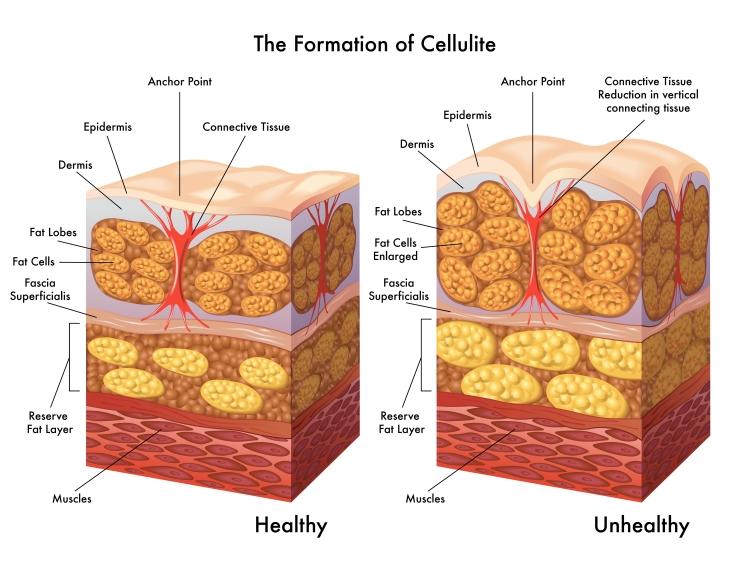
Common Misconceptions
It is Only a Fat Problem:
One of the most persistent myths is that cellulite is solely due to fat. However, it affect individuals regardless of their body weight or fat percentage. It’s more about the structure of fat and connective tissue and less about the amount of body fat.
Only Overweight People Get It:
Cellulite is not exclusive to overweight individuals. People of all shapes and sizes can have cellulite, underscoring that it’s influenced by factors beyond just body fat.
Diet and Exercise Can Completely Eliminate It:
While a healthy lifestyle can reduce the appearance of cellulite by decreasing fat levels and improving muscle tone, it may not completely eliminate it.
The structural aspects mean that for many, it remains regardless of diet and exercise efforts. However, diet and exercise can help, and we recommend healthy eating and an active lifestyle to contribute to general good health.
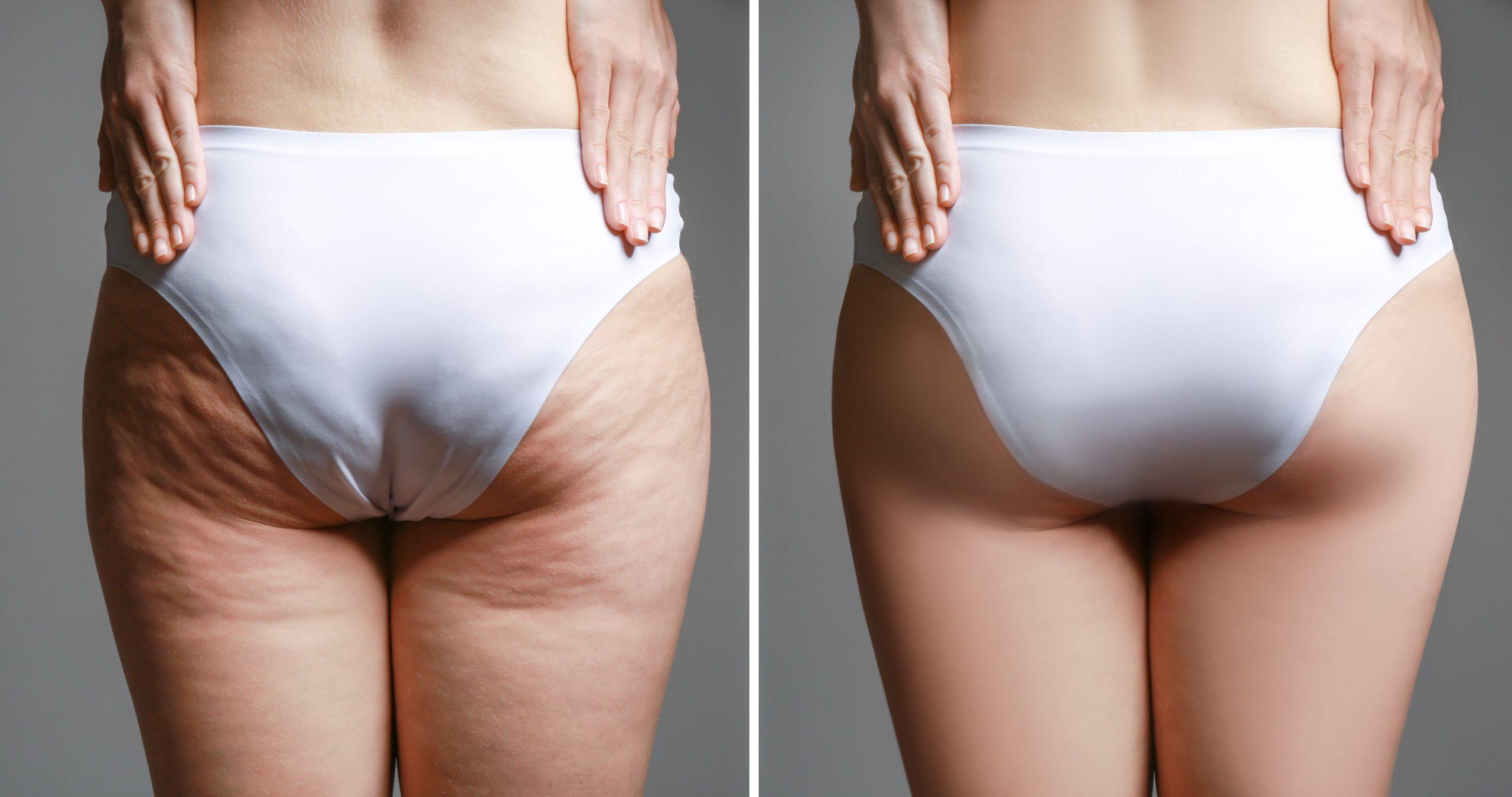
Different Types of Cellulite and Their Characteristics
Cellulite can be classified into several types, each with distinct characteristics:
Adipose Cellulite:
This type is soft and often occurs in larger areas of the body. It’s usually not as firmly attached, making the skin appear more spongy.
Oedematous Cellulite:
Characterized by fluid retention, oedematous cellulite gives a soft and puffy appearance. It often results from poor circulation and lymphatic drainage.
Fibrotic Cellulite:
This variety is hard and has a more pronounced dimpled appearance. It’s due to the fibrous connective tissue contracting and hardening over time, making the skin feel rough and firm.
Factors That Contribute to the Development of Cellulite
Several factors contribute to the development of cellulite, highlighting the complexity of this condition:
Genetics:
Genetic factors play a significant role in determining skin structure, fat distribution, and metabolism, all of which can influence formation.
Hormonal Factors:
Hormones such as estrogen, insulin, noradrenaline, thyroid hormones, and prolactin are part of the development process. For example, estrogen may decrease collagen production, weakening the connective tissue and making cellulite more visible.
Lifestyle Choices:
Diet, exercise, and smoking can all impact the appearance of cellulite. A diet high in fat, carbohydrates, and salt with low fiber content can increase fat accumulation and fluid retention, exacerbating the condition. Regular exercise can improve muscle tone and reduce fat, potentially reducing its appearance. Smoking can weaken the skin by reducing blood flow and breaking down collagen, leading to more pronounced effect..
Age:
As the skin ages, it loses elasticity and becomes thinner, making cellulite more visible. The connective tissue can also become stiffer and less elastic, exacerbating the appearance of cellulite.
Clothing:
Tight clothing can restrict blood flow and contribute to the formation. For example, very tight elastic around the buttocks and thighs can limit blood flow and encourage the formation of cellulite.
Understanding the condition requires a multifaceted approach that considers genetic predisposition, lifestyle factors, and the complex interplay between skin, fat, and connective tissue. While it’s a common and often harmless condition, the desire to minimize its appearance is understandable. Effective management strategies can include a combination of diet, exercise, and treatments that focus on improving circulation, reducing fat, and enhancing skin tone and elasticity.
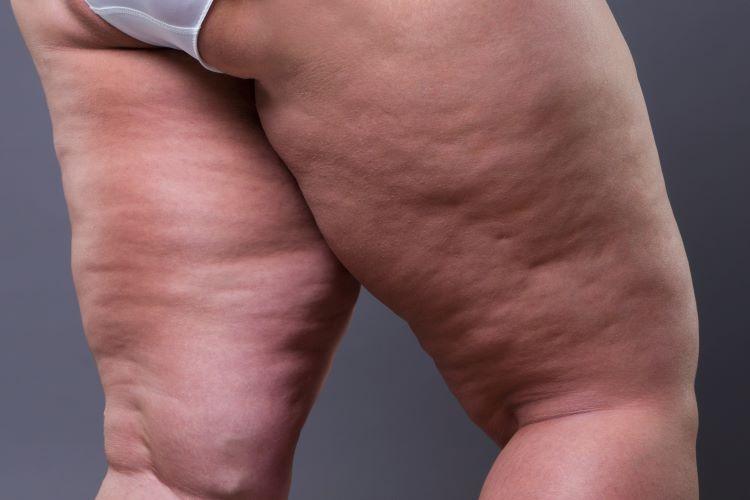
Celleulie FAQs:
- What is it?
-
- Cellulite is a skin condition where fat deposits push through the connective tissue beneath the skin, creating a dimpled or lumpy appearance, commonly on the thighs, buttocks, and hips.
- Who gets it?
-
- Primarily affects women due to differences in fat distribution, muscle, and connective tissue structure. However, men can also have cellulite.
- Is it harmful?
-
- No, it’s a cosmetic concern and not harmful to your health.
- Can exercise eliminate it?
-
- Exercise can reduce the appearance of cellulite by lowering body fat and improving muscle tone, but it may not completely eliminate it.
- Does diet affect it?
-
- Yes, a healthy diet can help minimize its appearance by reducing fat accumulation and inflammation.
- Are certain people more prone to it?
-
- Yes, genetic predisposition, hormonal factors, and lifestyle choices like diet and physical activity levels can make some more prone to developing cellulite.
- Can it be cured?
-
- There’s no permanent cure, but treatments can reduce its appearance. Options include massage, laser treatments, and topical agents.
- Does weight loss reduce it?
-
- Weight loss might reduce the appearance in some people by decreasing fat, but it can also make cellulite more visible in others due to skin laxity.
- Is it more common with age?
-
- Yes, it can become more noticeable with age as the skin loses elasticity and thins.
- Do creams and lotions work for it?
-
- Some products can temporarily reduce its appearance by firming the skin, but they do not remove it permanently.
- Are there medical treatments for it?
-
- Yes, treatments like laser therapy, subcision, radiofrequency, and acoustic wave therapy have shown to reduce its appearance.
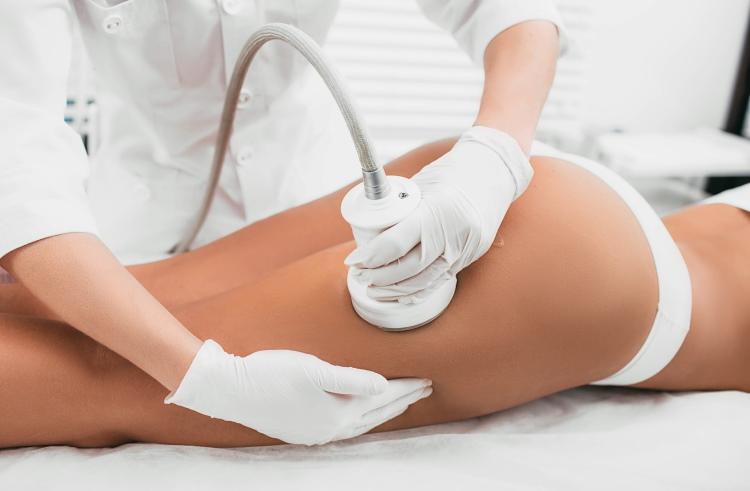
Conclusion
With its dimpled appearance, it affects millions of individuals worldwide, predominantly women. Despite its prevalence, cellulite remains a misunderstood condition often accompanied by myths and misconceptions. Through this exploration, we’ve gained insight into its nature and causes, together with various management strategies.
It’s important to recognize that cellulite is a natural part of the human body and not indicative of poor health or fitness. Factors such as genetics, hormonal fluctuations, lifestyle choices, and aging contribute to its development, highlighting its complex nature. While the condition may not pose health risks, its presence can impact self-esteem and body image, leading many to seek ways to manage or minimize its appearance.
Exercise and a healthy diet play essential roles in management by reducing body fat and improving muscle tone. While these lifestyle changes can positively influencethe condition, they may not entirely eliminate it. Additionally, various treatments, such as massage, laser therapy, and topical agents, offer options for reducing the visibility of cellulite, though they may provide temporary results.
Ultimately, the journey involves fostering self-acceptance and embracing body diversity. While treatments and lifestyle changes can help reduce the appearance of cellulite, no one solution works for everyone. Embracing our bodies as they are, with their natural variations and imperfections, is key to cultivating a positive body image and sense of self-worth.
By debunking myths and understanding cellulite’s multifaceted nature, we empower ourselves to approach it with compassion and acceptance. Rather than striving for unattainable standards of perfection, let us celebrate the diversity of our bodies and embrace the uniqueness of each individual. Together, let us promote body positivity and support one another on our journeys to self-love and acceptance. Remember, beauty comes in all shapes, sizes, and textures!

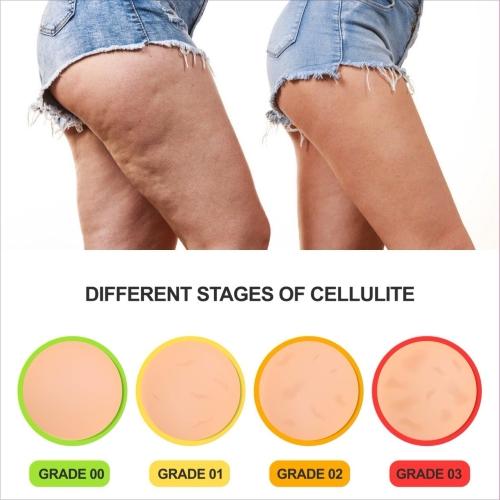
Recent Comments